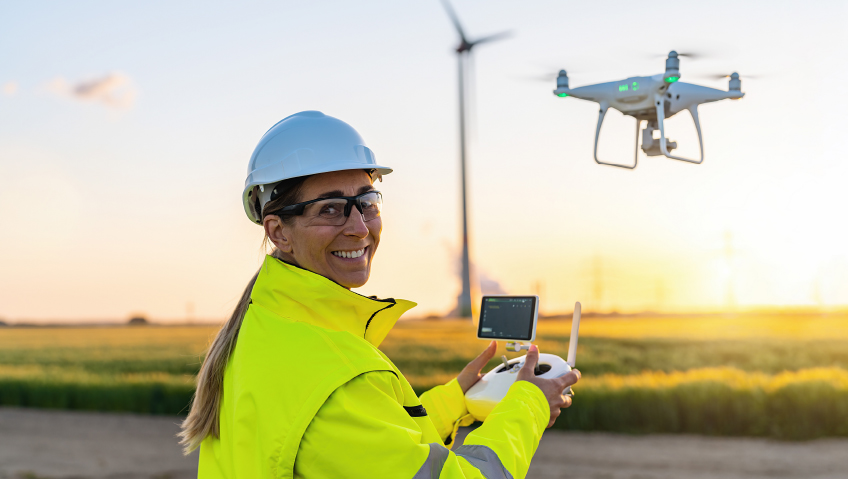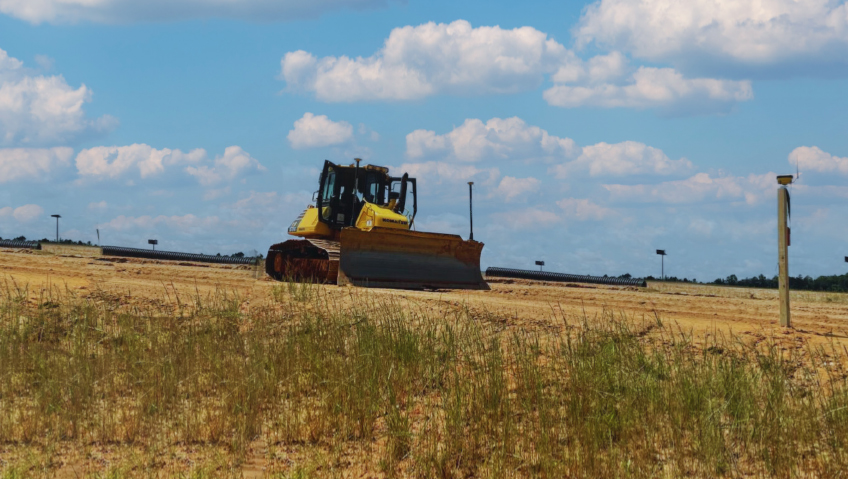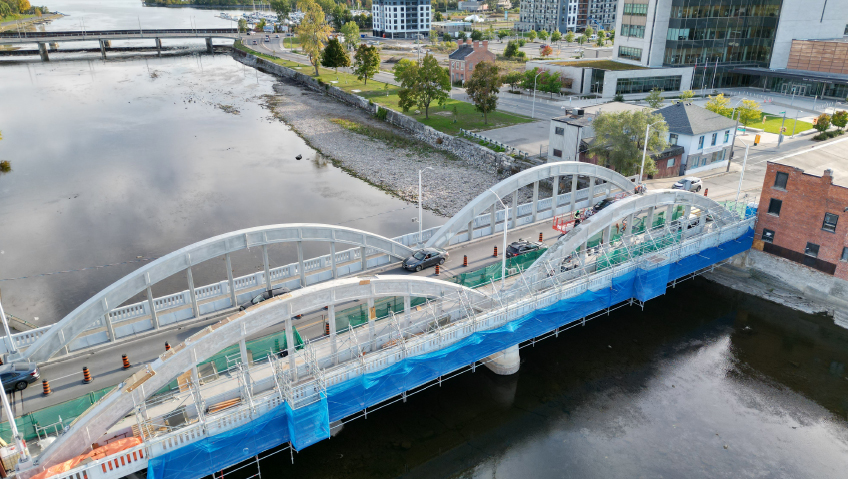From materials to machinery, technology continues to evolve, making construction faster, more efficient, and safer.
In just a few years, technologies inside our homes that once seemed futuristic have become everyday devices we take for granted. Smart home products like air purifiers, robot vacuums, and programmable dog feeders are becoming commonplace. Automation and security tech, such as thermostats, all-weather cameras, video doorbells, and digital locks can be controlled by cellphones anywhere in the world.
Most of us focus on devices inside our homes or businesses, but what about the materials and technologies used during construction? We are all familiar with common building products including wood, metals, concrete, aggregates, clay, and brick. Time-tested over centuries, these items are efficient and cost-effective, and are now being joined by processed products like composite wood.
Comprising wood fibers like sawdust mixed with plastics, these composites are attractive and extremely durable, making them ideal for outdoor decking use. Structurally, engineered wood—also known as man-made wood, mass timber, composite wood, and manufactured board—is being used for everything from single-home construction to commercial and industrial buildings. Cross-laminated timber (CLT), meanwhile, is increasingly being used as an alternative to steel and concrete. Lighter than many other building materials, CLT is durable, boasts outstanding thermal and acoustic properties, generates little waste, and is highly versatile.
Changing with the times
Along with newer building materials, new technology, such as 3D printing, is changing the face of construction. The early 3D printers of the mid-1980s were small-scale, and incorporated ultraviolet (UV) lasers and liquid polymers to make objects, often scale architectural models.
Over the years, printer size increased as technology improved. In 2006, 3D printing made its biggest leap when Dr. Behrokh Khoshnevis of the University of Southern California launched the Contour Crafting system. Inspired by its 3D desktop printer predecessors, the method was developed to ‘print’ buildings in place using concrete. This was soon followed by other 3D printers creating full-scale steel bridges, pods intended for shelter during disasters, mansions, and other large structures.
For construction companies, 3D printing boasts a plethora of advantages, both economic and environmental. Since structures are built in place, the carbon footprint is much smaller than it would be if traditional building materials needed to be hauled to site. Since the key material is a mortar mix containing a high cement content, buildings are printed to last a long time. The mix is extruded layer by layer, and there is very little waste in comparison with conventional materials. And since printed projects don’t require as many tradespeople, greater labour savings can be realized.
The size of 3D printed structures is virtually limitless, with the largest to date, a luxury horse barn, completed earlier this year. Using the COBOD BOD2 3D construction printer, the massive Wellington, Florida facility is 155 feet long, 85 feet wide, and 13 feet tall. The building will be known not only for its size but its strength, since it was designed and printed to withstand Florida’s extreme tropical storms and hurricanes.
Not to be outdone, technology has found its way into masonry as well. One of the most exhausting and labour-intensive jobs in construction, bricklaying has been made simpler and more effective through robotics. Patented by Mark Pivac in 2005 as an ‘automated bricklaying system,’ the Hadrian X® was born. In 2016, the bricklaying robot made news worldwide when it laid 1,000 bricks in just an hour, far exceeding human capabilities of 300 to 500 bricks in a day. Continually evolving, the next-generation Hadrian robot recently began laying blocks autonomously.
The future is now
As time passes, it is getting harder to remember a time before certain technologies. Developed in the 1970s, Building Information Modeling (BIM) creates and manages data, creating digital building representations. According to the National BIM Standard Project Committee, “BIM is a digital representation of physical and functional characteristics of a facility. A Building Information Model is a shared knowledge resource for information about a facility forming a reliable basis for decisions during its life-cycle; defined as existing from earliest conception to demolition.”
A collaborative tool, BIM software affords professionals, from architects and contractors to real estate developers and property managers, the ability to ‘see’ a structure before it is built. Widely used—and even mandated in some cases—BIM allows for informed decisions, and has transformed how many of today’s buildings are designed, built, and maintained.
Getting it done
Worsened of late by the pandemic, construction has faced a shortage of skilled tradespeople for decades. One of the many reasons companies are adopting new technologies is to supplement their human workforce with artificial intelligence (AI), computer-assisted design, robotics, and automation. One emerging tool is parametric modeling. A time-saving, computer-aided design tool, parametric modeling “is a modeling process with the ability to change the shape of model geometry as soon as the dimension value is modified,” according to ScienceDirect.
Likewise, digital twin technology is being used more and more in construction. Digital representations of actual objects, digital twin tech is being used to create exact digital replicas of a building or buildings, infrastructure like bridges and highways, and even entire cities. When used with BIM and 3D modeling, the technology provides valuable information in real time.
Along with digital twin tech, many companies are now using augmented reality (AR). Generating 3D visualizations, AR allows architects and builders the ability to better plan projects from start to finish. Virtual walkthroughs and progress reports enable stakeholders to see plans for themselves, increase efficiencies, and address potential issues, saving time, money and materials.
In just 27 years, the world’s population is expected to grow from 8 billion to 10 billion. While much has been written about the projected demand for food, the need for housing will be urgent, with some predicting 13,000 new buildings must be built per day between 2023 and 2050 to meet demand. This figure does not include other vital construction, such as schools and hospitals. According to Redshift by Autodesk, the next 20 years will see a worldwide need for $94 trillion USD in investment in global infrastructure. As more people migrate to cities, new roads, bridges, highways, and rail systems will need to be built, along with water, sewage, and power plants.
Faced with a shortage of skilled human workers, growing environmental concern, and the urgent need for on-time and on-budget project completion, the need for AI, robotics, and automation will only continue to grow.






